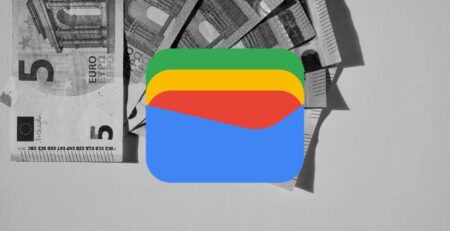In the fast-paced digital age, establishing a robust brand identity is essential for businesses looking to stand out. Your brand image is the only way for companies to forge meaningful connections with their target audience. Design is the cornerstone of this branding effort, encompassing crucial elements like logos, color palettes, typography, and visual assets deployed across diverse platforms.
In the past, only large corporations had the resources to build brand identity. Fortunately, the landscape of design tools has expanded significantly in the past few years. They offer businesses an extensive array of resources to create compelling and cohesive content. For a reasonable monthly subscription or a one-time fee, small businesses can get into the ring with the big players. Let’s dive into some of the top design tools categorized by their specific purposes, complete with practical examples and insightful reviews to guide you on your branding journey.
Table of Contents
Logo Design Tools
Logos are crucial for brand identity as they serve as the visual representation of a business. A well-designed logo instantly communicates the essence and values of a brand to consumers. It enhances brand recognition and creates trust and loyalty among customers. It’s also the first step in differentiating yourself from the competition.
They appear on products, marketing materials, and digital platforms, reinforcing brand visibility and professionalism. A strong logo contributes to brand consistency across all touchpoints, building credibility and attracting new customers. Ultimately, logos play a vital role in shaping brand perception and establishing a lasting connection. Here
Canva
Canva is a user-friendly graphic design platform that offers a range of templates for creating logos, social media graphics, and more. Its drag-and-drop interface makes it accessible to beginners, while its extensive library of fonts, icons, and illustrations caters to diverse design needs. Canva is particularly praised for its simplicity and versatility, making it a popular choice for businesses looking to design professional logos without the need for advanced skills.

Adobe Illustrator
Adobe Illustrator is a powerful vector graphics editor suitable for creating intricate and scalable logos. While Illustrator has a steeper learning curve compared to Canva, it offers advanced tools and features for precise logo design. Professional designers often prefer Illustrator for its robust capabilities, allowing for complete customization and refinement of logo designs.
Color Palette Generators
The choice of color scheme is more important than you may think. Certain colors incite certain emotions, and it’s the first thing customers feel when they interact with your product. Color palette generators offer strategic insights into color selection. By using these tools, businesses can create cohesive and appealing color schemes that resonate with their target audience.
A well-curated color palette reinforces brand identity, conveying emotions and values effectively. Color psychology plays a crucial role in influencing consumer perception and behavior. These generators help businesses choose harmonious colors that evoke desired feelings and associations. Consistent use of a brand’s color palette across various platforms creates brand recognition and professionalism.
Overall, color palette generators empower brands to create visually compelling identities that leave a lasting impact on consumers. Here are a couple of examples of reliable generators you can use for your business.
Coolors
This intuitive tool empowers users to effortlessly craft harmonious color palettes. Its user-friendly interface allows for the seamless generation of color schemes through simple interactions, catering to both novices and seasoned designers alike. Coolors stands out with its export capabilities, enabling users to save palettes in various formats such as PNG, PDF, and SCSS. This feature streamlines the integration of colors into branding materials, ensuring consistency across platforms.
Adobe Color
(formerly Adobe Kuler): Renowned for its integration with Adobe’s suite of design software, Adobe Color is a go-to tool for designers immersed in Adobe’s ecosystem. It offers extensive customization options, allowing users to fine-tune color combinations that align perfectly with their brand’s aesthetic. One of Adobe Color’s standout features is its access to a vast library of community-generated color themes, providing inspiration and diverse options for branding projects. The seamless integration with other Adobe products simplifies workflows, facilitating smooth transitions from color selection to design implementation.
Typography Tools
Typography tools encompass a range of software and resources designed specifically for working with fonts and text elements in design and branding. These tools are essential for creating and manipulating typography effectively. Here’s how they can help you build a brand:
- Brand Consistency: Typography tools enable businesses to select fonts that align with their brand’s tone and values. Consistent typography across all brand materials—such as logos, websites, and marketing collateral—creates a unified and professional look, reinforcing brand identity.
- Visual Impact: The right typography can evoke specific emotions and resonate with target audiences. Whether it’s conveying elegance, playfulness, or reliability, typography helps communicate the brand’s message effectively through visual cues.
- Differentiation: Unique typography sets a brand apart from competitors and enhances brand recognition. Custom fonts or carefully chosen typefaces contribute to a memorable brand identity that stands out in a crowded marketplace.
- Brand Personality: Typography choices reflect the brand’s personality. Whether aiming for a classic serif, modern sans-serif, or artistic script, typography conveys the brand’s character and influences how it is perceived by customers.
Google Fonts
Google Fonts stands out for its extensive library of free, open-source fonts, catering to web and graphic design projects. With a diverse collection ranging from classic serif to modern sans-serif and decorative styles, Google Fonts offers options suitable for various design styles and purposes. The platform streamlines font selection with user-friendly previews and customization features, allowing designers to experiment and find the perfect typography to complement their brand’s aesthetic.
FontPair
FontPair is a valuable tool that simplifies the process of choosing font combinations for headings and body text. It suggests harmonious pairings that enhance brand messaging and ensure visual consistency across design elements. By recommending complementary font combinations, FontPair saves designers time and effort in selecting typography that aligns seamlessly with the brand’s identity. This intuitive tool provides designers with curated font options that enhance readability and convey the desired tone and personality of the brand.
Social Media Graphics Tools
Social media graphing tools are platforms or software that analyze and visualize data from social media networks. These tools provide insights into audience demographics, engagement metrics, content performance, and trends. They are crucial for building a brand because they offer actionable data that informs strategic decisions.
- Audience Understanding: Social media graphing tools help brands understand their audience demographics, interests, and behaviors, enabling targeted content creation and personalized marketing.
- Content Optimization: By analyzing engagement metrics like likes, shares, and comments, brands can optimize content strategies to resonate with their audience and improve brand visibility.
- Competitive Analysis: These tools allow brands to monitor competitors’ activities and benchmark performance, identifying opportunities and areas for improvement.
- Campaign Evaluation: Brands can assess the effectiveness of social media campaigns through data-driven insights, refining strategies for better ROI.
Overall, social media graphing tools empower brands to make informed decisions, enhance audience engagement, and build a stronger online presence. Here are 2 of our favorite graphic tools:
Pablo by Buffer
Pablo stands out for its user-friendly interface tailored for creating engaging social media visuals. The tool offers pre-sized templates that are optimized for various platforms, streamlining the graphic creation process. Pablo’s diverse library of images and fonts enables businesses to craft eye-catching graphics effortlessly. One of its best features is the intuitive design interface, making it accessible to marketers and entrepreneurs seeking to enhance their social media presence quickly and effectively.

Visme
Visme excels in offering a comprehensive range of templates for infographics, presentations, and social media graphics, catering to diverse branding needs. The platform’s drag-and-drop functionality allows users to customize designs easily without extensive design knowledge. Visme empowers businesses to create dynamic visual content with its robust customization options, making it ideal for enhancing online branding through visually compelling graphics. Its versatility and ease of use make Visme a valuable tool for businesses aiming to create professional-quality graphics for social media and beyond.
Website Design Tools
Website design tools are software or platforms that facilitate the creation and customization of websites without requiring extensive coding knowledge. These tools typically offer intuitive interfaces, pre-designed templates, and drag-and-drop functionality to streamline the website design process. Here’s what makes them so essential to building a brand:
- Professional Appearance: Website design tools enable businesses to create visually appealing and professional-looking websites that reflect their brand identity. A well-designed website enhances credibility and establishes a positive first impression with visitors.
- Brand Consistency: Consistent branding elements, such as colors, fonts, and imagery, can be easily implemented across the website using design tools. This consistency reinforces brand identity and strengthens brand recognition.
- User Experience Optimization: Website design tools allow for the creation of user-friendly interfaces and navigation structures, improving the overall user experience. A positive user experience encourages engagement and boosts brand loyalty.
- Accessibility and Responsiveness: Many website design tools offer features that ensure websites are accessible and responsive across different devices and screen sizes. This adaptability is crucial for reaching and engaging a diverse audience.
- Content Management: Design tools often integrate content management systems (CMS) that simplify content updates and maintenance. This flexibility enables brands to keep their websites current and relevant, supporting ongoing brand communication and marketing efforts.
In summary, website design tools empower brands to create compelling, functional, and user-friendly websites. Businesses can establish a strong online presence, communicate their brand message effectively, and ultimately build trust and loyalty with their target audience. Here are two of the best website design tools on the market:

WordPress
Known for its versatility, WordPress offers a robust content management system (CMS) enriched with numerous themes and plugins. Its standout features include:
- Customizability: WordPress provides unparalleled flexibility, allowing users to create highly customized websites tailored to specific design preferences and branding guidelines.
- Community Support: With a vast community of developers and users, WordPress ensures extensive support and resources for businesses of all sizes.
- Plugin Integration: The availability of plugins extends WordPress’s functionality, enabling seamless integration of additional features like e-commerce, SEO optimization, and social media integration.
Wix
As a leading website builder, Wix excels in empowering users to craft visually appealing websites without coding. Its notable features include:
- Drag-and-Drop Interface: Wix’s intuitive drag-and-drop interface simplifies website design, making it accessible to entrepreneurs and small businesses.
- Extensive Template Library: Wix offers a diverse range of professionally designed templates suitable for various industries and design preferences.
- Customization Options: Users can personalize their websites with Wix’s robust customization tools, ensuring a branded online presence aligned with their unique identity.
- Integrated Features: Wix seamlessly integrates essential features like e-commerce capabilities, blogging tools, and SEO optimization, providing a comprehensive solution for website design and management.
By leveraging the best features of WordPress and Wix, businesses can create compelling, functional, and branded websites that effectively communicate their identity and engage their target audience. These platforms empower brands to establish a strong online presence and build credibility in the digital landscape.
In conclusion, the array of design tools available today offers invaluable resources for businesses aiming to establish and enhance their brand identity. From logo design to website development and social media graphics, these tools empower brands to create cohesive and compelling visual representations that resonate with their target audience.
By leveraging these diverse design tools, businesses can establish a strong and recognizable brand presence in the competitive marketplace. The key is to select the right tools based on specific design needs and objectives, ensuring that each visual element contributes cohesively to the overall brand identity. With creativity, strategic planning, and the right design tools at their disposal, businesses can cultivate a lasting and impactful brand identity that resonates with their audience and fosters brand loyalty.
For more similar blogs, visit EvolveDash today!
FAQs
- What are the best free design tools for small businesses?
Some great free tools include Canva, Google Fonts, and Coolors for logo, typography, and color design.
- How do I choose the right color palette for my brand?
Use color psychology to match your brand’s message. Tools like Coolors and Adobe Color can help generate professional palettes.
- Are AI design tools good for branding?
Yes, AI-powered tools like Looka and Brandmark can create logos, fonts, and brand kits quickly and affordably.
- How can I make my brand design consistent across platforms?
Use the same colors, fonts, and styles across logos, social media, and websites. Tools like Visme and Canva help maintain consistency.
- What’s the difference between Canva and Adobe Illustrator for branding?
Canva is beginner-friendly with ready-made templates, while Adobe Illustrator offers advanced features for professional customization.



















